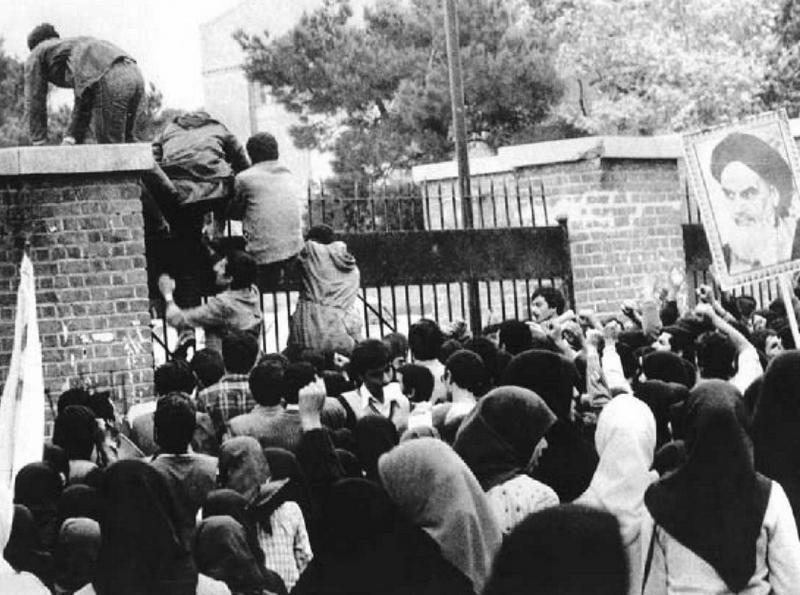Iran Hostage Crisis: From Its Origins To Its Aftermath
By | November 24, 2021


America Tried To Help Pahlavi, Who Had Cancer
Prior to the hostage-taking, the shah of Iran, Mohammad Raza Pahlavi was overthrown, and Ayatollah Khomeini came to power, instituting an anti-Western theocracy. Briefly, the American embassy was occupied, and the staff was held hostage on February 14, 1979, although it was returned to U.S. hands within three hours. During this first attempt, the Organization of Iranian People's Fedai Guerrillas kidnapped a Marine, Kenneth Kraus. He was tortured, tried, and convicted of murder. Six days after his kidnapping, President Carter and William H. Sullivan, the ambassador, secured his release. This led to the reduction in the staff at the embassy to just over 60; it had been close to one thousand earlier in the 1970s.
Pahlavi then came to the U.S. for cancer treatment. Iran demanded his return; he was accused of crimes committed against the Iranian citizens with the help of the secret police. The U.S. rejected Iran’s demands, and Iran perceived the U.S. as trying to undermine the Iranian Revolution. Iran also saw the decision to grant Pahlavi immunity as indicating U.S. complicity in Pahlavi’s atrocities. In December, he left the U.S. and Egypt granted him asylum. He died there on July 27, 1980, after being granted asylum when he left the U.S.

Khomeini Intensified The Situation
When the Shah was overthrown, Ayatollah Khomeini had come to power, instituting an anti-Western theocracy. After Pahlavi came to the U.S., Khomeini increased his anti-American rhetoric, calling America the “Great Satan.” The hostage-taking was, in part, an attempt to leverage the return of the Shah to Iran, and the Ayatollah personally blessed it. They also wanted the U.S. government to release frozen Iranian assets in the U.S.
On the date the hostages were taken, Iranian student unions loyal to Khomeini had organized demonstrations outside of the walled compound. It was originally planned to be a symbolic occupation, and they claimed to not mean any harm. However, the large, angry crowd which gathered outside the embassy had other plans.

The Initial Days Of The Crisis
As the occupation unfolded, the Marines and embassy staff were blindfolded and marched in front of photographers. When the hostage-takers climbed over the wall, a group of six diplomats evaded capture as they were working in a separate building in the compound at the time. They eventually were harbored by Canadians. The six were rescued by a joint CIA-Canadian effort which was called the “Canadian Caper.” On the morning of January 27, 1980, they managed to board a Swissair flight to Zürich and departed Tehran.
Initially, they planned to hold the embassy for a short time, but because of the popularity of the takeover, Khomeini’s support, and Carter’s hesitation to issue an ultimatum, the hostage situation was extended. Additionally, it seemed that the situation had united Iran, although after it ended, this coalition dissolved, and the theocratic right decimated the left. Just as the crisis seemed to unite Iran, it also seemed to unite America. It also led to anti-Iranian actions in America.

They Were Moved Around And Tortured
On November 19, the hostage-takers released two African Americans and one woman because they claimed solidarity with “oppressed minorities.” The following day, four additional women and six African Americans were released. A single African American hostage was not released, but one white man, Richard Queen, was released after becoming seriously ill. He was later diagnosed with multiple sclerosis. The remaining captors were held in the embassy, but then they were spread out to stop the possibility of rescue. In midsummer 1980, they were moved to prisons in Tehran. Finally, in November 1980, they were moved to the Teymur Bakhtiar mansion in Tehran, where they remained until their release.
According to Iranian propaganda, they were treated with respect, but the hostages described beatings and abuse, and some endured a mock execution. They also endured solitary confinement, and some had their hands bound for days or weeks.

Diplomacy Failed And So Did Rescue Attempts
Initially, Carter tried to appeal for their release on humanitarian grounds. On November 12, 1979, he enacted an oil embargo, and then on November 14, around $8 billion in Iranian assets were frozen. However, diplomatic efforts failed, and then in early 1980, Carter ordered the military to attempt a rescue mission. The effort, Operation Eagle Claw, used warships, including the USS Nimitz and USS Coral Sea. On April 24, 1980, the failed attempt left one Iranian and eight American servicemen dead. The servicemen died when one of the helicopters crashed. A second rescue attempt was planned but never tried. After the Iran-Iraq war began in September 1980, Iran entered into negotiations with the U.S. The Algiers Accords were signed on January 19, 1980. The next day, the hostages were released minutes after Ronald Reagan was sworn into the presidency.

The Aftermath Of The Crisis
They were first flown on an Algerian plane to Algiers, where they were transferred to Warren M. Christopher. They then flew to Rhein-Main Air Base in West Germany, followed by an Air Force hospital in Wiesbaden. At the hospital, former President Carter received them, acting as an emissary and they had medical check-ups and debriefings. From there, they stopped in Shannon, Ireland to refuel, and finally arrived back in America, where they had a heroes’ welcome.
Iran’s government and affiliated groups now use the former U.S. Embassy building, and, starting in 2001 it was used as a museum to the revolution. Because of the hostage crisis, the U.S. and Iran severed diplomatic relations; Iran first chose Algeria as its protecting power in the United States, but switched to Pakistan in 1992, while the U.S. chose Switzerland as its protecting power in Iran.
